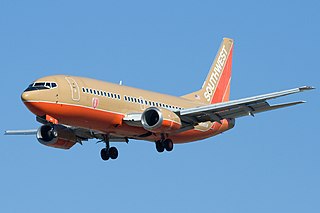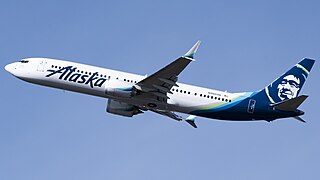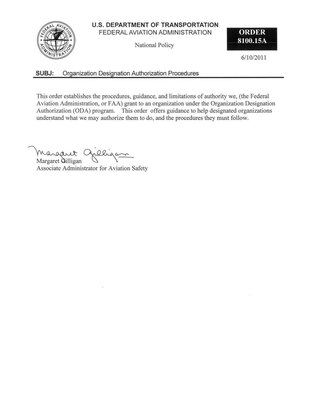
The ERCO Ercoupe is an American low-wing monoplane aircraft that was first flown in 1937. It was originally manufactured by the Engineering and Research Corporation (ERCO) shortly before World War II; several other manufacturers continued its production after the war. The final model, the Mooney M-10, first flew in 1968 and the last model year was 1970. It was designed to be the safest fixed-wing aircraft that aerospace engineering could provide at the time, and the type continues to enjoy a faithful following.

The IMCO CallAir A-9 is a small agricultural aircraft that first flew in 1962, a development of the company's previous successful crop-dusters. It is typical of aircraft of its type - a single-seat aircraft with a low wing incorporating spraying gear.
The Intermountain Manufacturing Company (IMCO) was a US aircraft manufacturer of the 1960s based in Afton, Wyoming that produced agricultural aircraft.

Boeing Commercial Airplanes (BCA) is a division of the Boeing Company. It designs, assembles, markets, and sells commercial aircraft, including the 737, 767, 777, and 787, along with freighter and business jet variants of most. The division employs nearly 35,000 people, many working at the company's division headquarters in Renton, Washington or at more than a dozen engineering, manufacturing, and assembly facilities, notably the Everett Factory and Renton Factory, and the South Carolina Factory.

Beginning in the late 1950s the United States aircraft company Bay Aviation produced nine twin-engine conversions of the Beechcraft Bonanza called the Super "V" Bonanza. After production was shifted to Canada in 1962, five more aircraft were built for a total production run of fourteen. The basis of the conversion was the early Model 35 Bonanza with the original small V-tail surfaces. The Super-V competed with Beechcraft's own Travel Air twin-engine Bonanza derivative.

The Globe GC-1 Swift, also known as the Globe/Temco Swift, is a light, two-seat sport monoplane from the post–World War II period.

The Eclipse 500 is a very light jet (VLJ) originally produced by Eclipse Aviation of Albuquerque, New Mexico, United States. The company was founded in 1998 to develop the 1997 Williams V-Jet II demonstrator. The prototype first flew with Williams EJ22 turbofans on August 26, 2002. The engines were replaced by Pratt & Whitney Canada PW610Fs in 2004 and Eclipse Aviation won the Collier Trophy in February 2006 for the design. A provisional FAA type certification was received on 27 July 2006 and the first delivery occurred on 31 December 2006.

A type certificate signifies the airworthiness of a particular category of aircraft, according to its manufacturing design. Certification confirms that the aircraft of a new type intended for serial production is in compliance with applicable airworthiness requirements established by the national air law.

The Hawker 400 is a light business jet. Initially designed and built by Mitsubishi, it has been further developed and updated by the Beech Aircraft Company, now part of Textron Aviation. A military version, the T-1 Jayhawk was also produced. In total, over 900 Hawker 400s have been delivered. In 2017, Hawker began to offer a manufacturer supported upgrade package known as the Hawker 400XPR. The new modifications are intended to reduce fuel consumption and improve range.

The Taylor Cub was originally designed by C. Gilbert Taylor as a small, light and simple utility aircraft, evolved from the Taylor Chummy. It is the forefather of the popular Piper J-3 Cub, and total production of the Cub series was 23,512 aircraft.

The Clinton-Sherman Industrial Airpark, also known as the Oklahoma Air & Space Port is a spaceport in Washita County, Oklahoma, near the town of Burns Flat. The Federal Aviation Administration (FAA) granted a license to the site in June 2006 to the Oklahoma Space Industry Development Authority (OSIDA) to "oversee the takeoff and landing of suborbital, reusable launch vehicles." It also boasts the first space flight corridor, "The Infinity One"—which is about 152 miles long and averages about 50 miles wide—that is not in restricted airspace and does not interfere with Military Operations Areas (MOAs). The facility is an FAA licensed launch site, one of only 12 in the U.S. Individual operators must also secure a separate license in order to make space flights from the facility.

The Interstate Cadet was an American two-seat tandem, high wing, single-engine monoplane light aircraft. Around 320 of these aircraft were produced between the years 1941 and 1942 by the Interstate Aircraft and Engineering Corporation based in El Segundo, California. The construction techniques employed were a welded steel tube fuselage, wood (spruce) wing structure with metal ribs, and fabric covering, all of which were fairly standard in the 1940s.

The Mooney M10 Cadet is a light airplane manufactured by the Mooney Aircraft Company in 1969 and 1970. The M10 is derived from the ERCO Ercoupe, the type certificates for which Mooney purchased from the Alon Corporation in 1967.

The Culver Cadet is an American two-seat light monoplane aircraft, also as a radio-controlled drone, produced by the Culver Aircraft Company.

The Call-Air Model A is an American two- to three-seat utility aircraft designed by the Call brothers and built by the Call Aircraft Company, later developed into a successful line of agricultural aircraft.

The Boeing 737 Classic is a series of narrow-body airliners produced by Boeing Commercial Airplanes, the second generation of the Boeing 737 series of aircraft. Development began in 1979 and the first variant, the 737-300, first flew in February 1984 and entered service that December. The stretched 737-400 first flew in February 1988 and entered service later that year. The shortest variant, the 737-500, first flew in June 1989 and entered service in 1990.

The Boeing 737 MAX is the fourth generation of the Boeing 737, a narrow-body airliner manufactured by Boeing Commercial Airplanes. It succeeds the Boeing 737 Next Generation (NG) and competes with the Airbus A320neo family. The series was announced in August 2011, first flown in January 2016, and certified by the US Federal Aviation Administration (FAA) in March 2017. The first 737 MAX delivered to a customer was a MAX 8 to Malindo Air, which accepted and began operating the aircraft in May 2017.

The Boeing 737 MAX passenger airliner was grounded worldwide between March 2019 and December 2020 – longer in many jurisdictions – after 346 people died in two similar crashes in less than five months: Lion Air Flight 610 on October 29, 2018, and Ethiopian Airlines Flight 302 on March 10, 2019. The Federal Aviation Administration initially affirmed the MAX's continued airworthiness, claiming to have insufficient evidence of accident similarities. By March 13, the FAA followed behind 51 concerned regulators in deciding to ground the aircraft. All 387 aircraft delivered to airlines were grounded by March 18.

The Organization Designation Authorization (ODA) program was established by FAA Order 8100.15 . The ODA, in conjunction with the Federal Aviation Administration (FAA), grants airworthiness designee authority to organizations or companies. The regulations addressing the ODA program are found in Title 14 of the Code of Federal Regulations part 183, subpart D, sections 183.41 through 813.67.

The Boeing 737 MAX was initially certified in 2017 by the U.S. Federal Aviation Administration (FAA) and the European Union Aviation Safety Agency (EASA). Global regulators grounded the plane in 2019 following fatal crashes of Lion Air Flight 610 and Ethiopian Airlines Flight 302. Both crashes were linked to the Maneuvering Characteristics Augmentation System (MCAS), a new automatic flight control feature. Investigations into both crashes determined that Boeing and the FAA favored cost-saving solutions, which ultimately produced a flawed design of the MCAS instead. The FAA's Organization Designation Authorization program, allowing manufacturers to act on its behalf, was also questioned for weakening its oversight of Boeing.




















